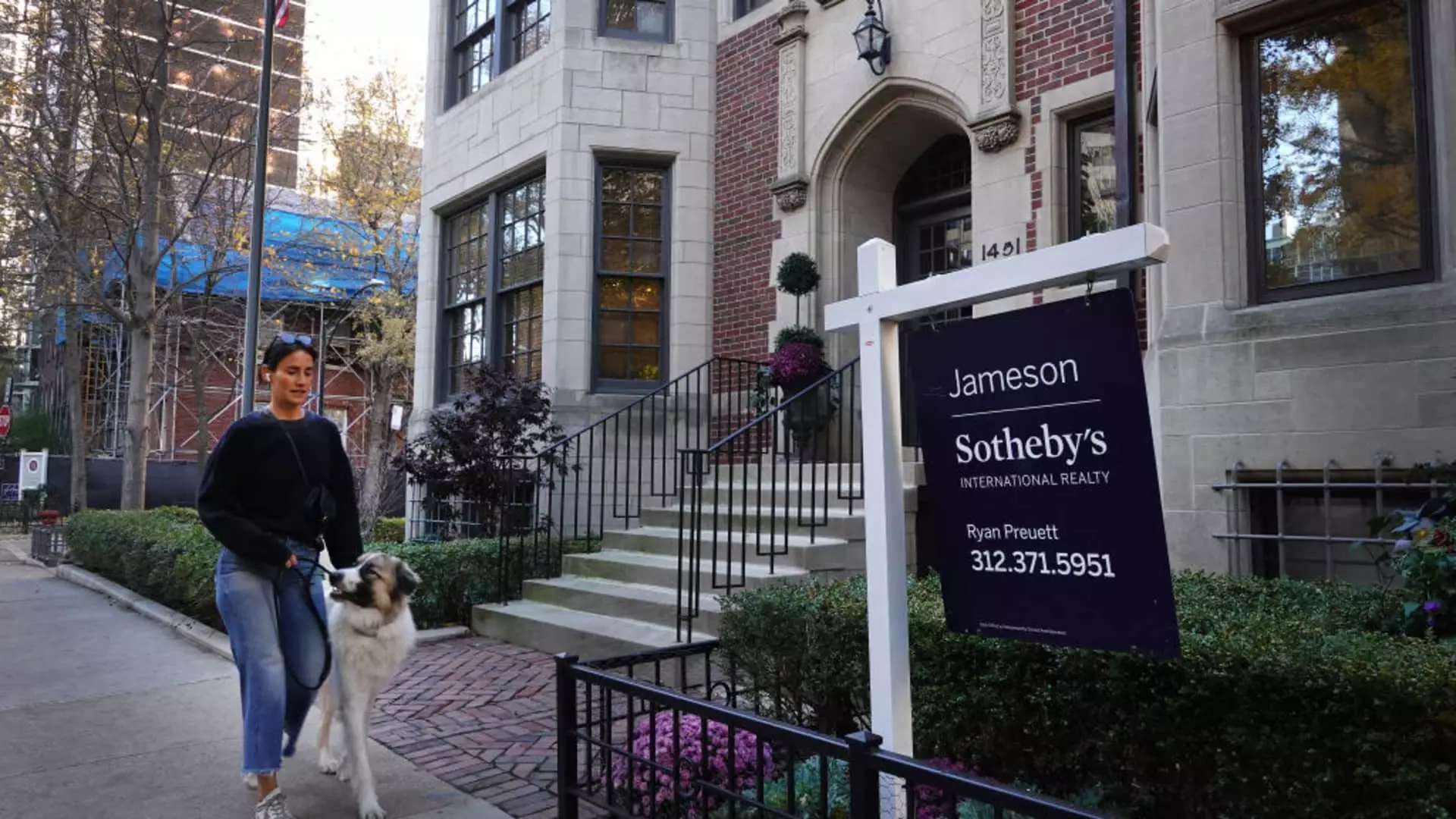In August, the sales of previously owned homes experienced a decrease, dropping 2.5% from July to an annualized rate of 3.86 million units, as reported by the National Association of Realtors (NAR). This decline is notable, as it suggests that the housing market continues to grapple with various challenges, including elevated mortgage rates and persistent affordability issues. Analysts had anticipated a more robust performance, yet the latest figures reveal that home sales were 4.2% lower than those in August 2022. The ongoing trend reflects three consecutive months of sales failing to surpass the crucial 4 million mark, an indicator of market health.
This downturn can largely be attributed to the market conditions around late June and July, when potential buyers signed contracts. During this period, mortgage rates were just beginning to decline from slightly over 7% in mid-June to approximately 6.7% by the end of July. As a result, these market dynamics have likely influenced buyer behavior and decision-making during this critical period.
Despite the declining sales numbers, an encouraging facet of the market is the modest improvement in housing inventory. By the end of August, there were approximately 1.35 million homes available for sale—a 0.7% increase from July and a notable 22.7% increase year over year. However, this figure still represents only a 4.2-month supply of homes, far from the 6-month inventory level typically seen as balanced for both buyers and sellers.
Lawrence Yun, NAR’s chief economist, remarked on the favorable implications of this inventory increase. His observations indicate that the rise in supply translates into a more favorable environment for buyers, enabling them to explore options and negotiate better prices. Yet, it is crucial to note that in regions characterized by limited supply, such as the Northeast, sellers maintain leverage, illustrating a continued real estate imbalance that complicates the purchasing process for buyers.
One significant aspect of the current housing market is pricing pressure caused by tight inventory levels. The median price of an existing home sold in August reached $416,700, indicating a 3.1% increase from the same period in 2022. This price point marks the highest recorded for the month of August. However, the rise in median prices may be misleading, as it reflects skewed sales figures that are heavily influenced by the types of homes being sold during this period. While homes priced above $750,000 experienced a surge in sales, properties priced under $500,000 saw a decline, underscoring the growing challenges faced by first-time homebuyers.
The demographic of first-time buyers is also a point of concern, comprising only 26% of August sales—matching an all-time low recorded back in November 2021. This decline suggests that many potential new entrants to the market are finding current conditions prohibitive, leading to an adverse effect on overall market dynamism.
One potential bright spot for the housing market has been the decline in mortgage rates, which dipped impressively from 6.7% in late July to approximately 6.15% by late August. This represents the lowest mortgage rates seen in roughly two years and could create a more accessible environment for buyers. As mortgage rates continue to slide, they may provide the necessary push for hesitant buyers to finally commit to purchases.
While August’s housing market metrics reveal a challenging landscape for home sales, the combination of increased inventory and declining mortgage rates may signal a shift towards more favorable conditions for buyers in the months to come. That said, regional disparities, tight supply, and elevated prices still pose significant hurdles that need to be addressed to foster a healthier housing market overall.

